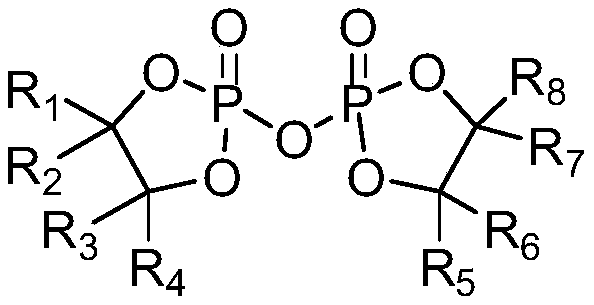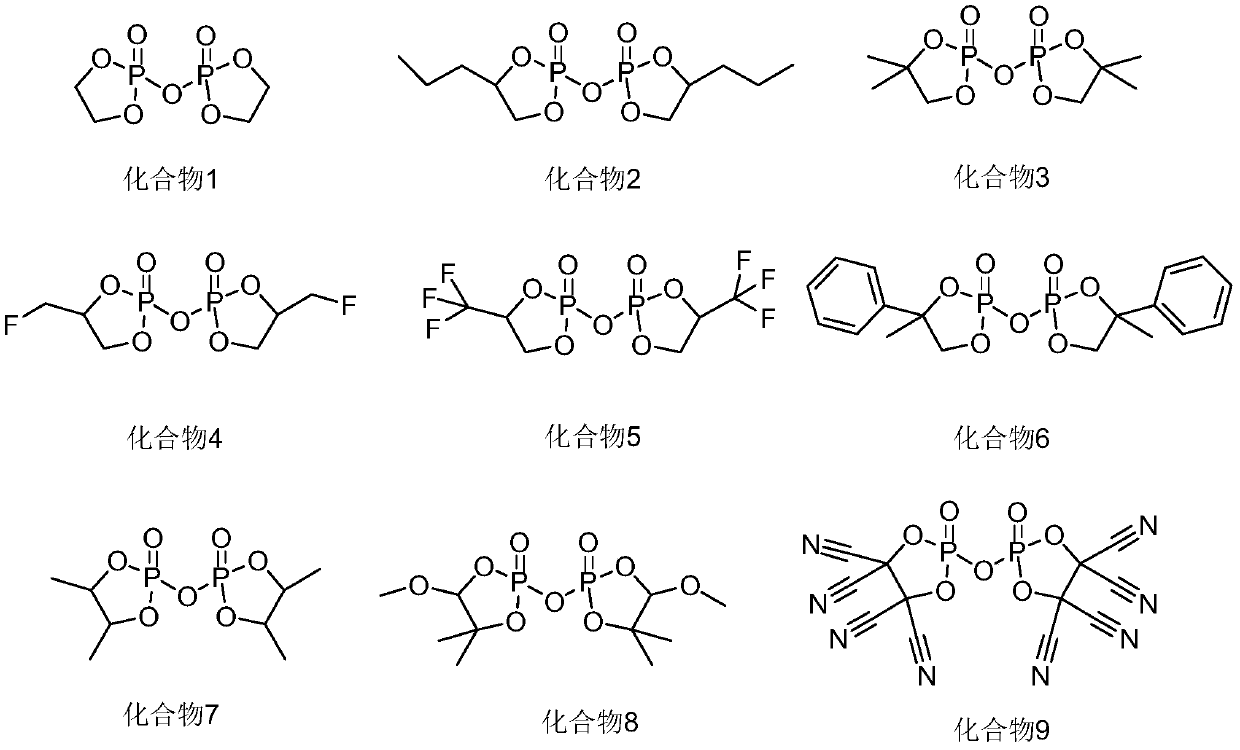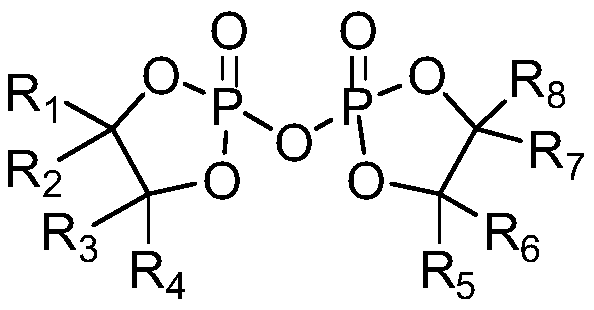Electrolytic solution and lithium ion battery using same
An electrolyte and lithium salt technology, applied in secondary batteries, organic electrolytes, non-aqueous electrolytes, etc., can solve the problems affecting the storage performance and cycle performance of lithium-ion batteries, and achieve guaranteed performance, high ionic conductivity, and high thermodynamics. The effect of stability
- Summary
- Abstract
- Description
- Claims
- Application Information
AI Technical Summary
Problems solved by technology
Method used
Image
Examples
Embodiment 1
[0023] (1) Preparation of electrolyte:
[0024] Under argon atmosphere, the electrolyte solution is prepared in a vacuum glove box with a moisture content of 6 , PS, lithium difluorophosphate and bicyclic phosphoric anhydride compounds. Wherein, ethylene carbonate / ethyl methyl carbonate / diethyl carbonate=2 / 5 / 3 (mass ratio), LiPF 6 The concentration of lithium salt is 1.0mol / L, the content of PS is 2% of the total weight of the electrolyte, the content of lithium difluorophosphate is 1% of the total weight of the electrolyte, the bicyclic phosphoric anhydride compound uses compound 1, and the bicyclic phosphoric anhydride compound 1 The content accounts for 1% of the total mass of the electrolyte, and is mixed uniformly to obtain the electrolyte of the present invention.
[0025] (2) Preparation of the positive electrode sheet: the nickel-cobalt lithium manganate ternary material LiNi 0.5 mn 0.3 co 0.2 o 2 , the binder PVDF and the conductive agent SuperP are mixed uniform...
Embodiment 2~9
[0029] The preparation of lithium-ion batteries in Examples 2-9 is the same as in Example 1, the difference is that different bicyclic phosphoric anhydride compounds are used in the electrolytes of each example, and the corresponding bicyclic phosphoric anhydride compounds 2-9 are used in Examples 2-9. , while Example 1 uses bicyclic phosphoric anhydride compound 1, and the specific components and contents are shown in Table 1.
Embodiment 10
[0031] The preparation of the lithium-ion battery in Example 10 is the same as in Example 5, the difference being that 1-propyl phosphoric anhydride is used in the electrolyte of Example 10, and 1,3-propanesulfonic acid is used in the electrolyte of Example 5 Lactone, the specific components and content are shown in Table 1.
PUM
 Login to View More
Login to View More Abstract
Description
Claims
Application Information
 Login to View More
Login to View More - Generate Ideas
- Intellectual Property
- Life Sciences
- Materials
- Tech Scout
- Unparalleled Data Quality
- Higher Quality Content
- 60% Fewer Hallucinations
Browse by: Latest US Patents, China's latest patents, Technical Efficacy Thesaurus, Application Domain, Technology Topic, Popular Technical Reports.
© 2025 PatSnap. All rights reserved.Legal|Privacy policy|Modern Slavery Act Transparency Statement|Sitemap|About US| Contact US: help@patsnap.com



